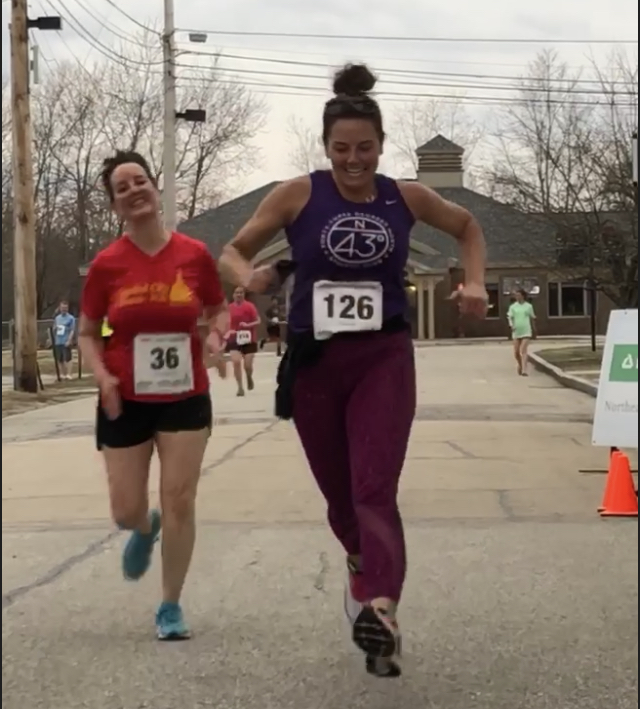What separates runners from non-runners?
The willingness to follow a training plan.
“Running is nothing more than a series of arguments between the part of your brain that wants to stop and the part that wants to keep going.” I am a firm believer in this. The body is capable of amazing things. Most of you reading this right now could run a half marathon today if you had to. You may not be able to walk the next day, but you could do it.
When I ran my first half marathon, the longest distance I had ever run was 8 miles. I showed up, not knowing what to expect and really nervous. Before the gun went off, I ate a handful of jelly beans and took off. I finished the race – which was my initial goal – and the spent the next few days walking down the stairs backwards and side-stepping to my car. I learned a lot over the next few races about the importance of a solid and appropriate training plan.
One of the greatest benefits about running races is the diversity in race length and type. You can find races ranging from a 1-mile time trial to a 100-plus miles race. The average exerciser can complete a 5K with minimal or no training and have a short recovery period. I enlisted the advice of several runners to find out what drives them to run, their favorite distance and their training regimen.
Brenda Rines is an avid 5K runner who participates in six to eight 5Ks per year. She enjoys running 5Ks for the camaraderie. Brenda says she is motivated by others running and it makes her run faster. Her running goal is just to stay active. She trains for her races on the treadmill during the colder months and outside when weather permits. She typically runs for a hour and doesn’t worry about pace or distance. When possible, Brenda enjoys themed races where people wear costumes, have fun and serve post-race food. She makes a day of it by finding cool destinations and bringing friends and family to run with her.
Brooke Mulkerron, an experienced marathoner, is motivated to run for many reasons. The No. 1 driving force, her daughter Tess. Although Brooke enjoys running more for metal relaxation than the physical aspect of running, she likes the added benefit. She decided to increase her distance to a marathon because of the satisfaction and peace she felt in her mind after running. She says that running is “the best therapy ever.” More importantly, Brooke runs for a cause. Last year she ran in honor of her daughter Tess and in support of Boston Children’s Hospital. All of the monies raised supports research funds that go directly to where cancer patients receive treatment and care. To keep herself injury-free, Brooke relied on the training plan set out by her marathon team and did several “team runs” to ensure she was properly prepared.
Kate Fleming enjoys running 26.2 miles and even longer. “A marathon is a distance I feel I can push myself in terms of speed whereas a longer run I’m just aiming for a steady pace. Although ultra marathons on the trails are my favorite, I don’t run for time. It’s not about speed for me, it’s about the experience of being out in the trails overcoming physical obstacles and just getting it done. The ultra community is also incredibly awesome. Trail races have a different feel and it’s a lot of fun!”
Kate started running longer distances because she felt like she was more of an endurance runner than a speed runner. When running 5Ks, she didn’t get the runner’s high she was looking for. “I never felt happy after shorter runs – too much pressure for me. I started just running longer distances with friends, and slowly it turned into multiple-hour runs which I really loved and was good at. Then I decided I’d try some races – 25K, 50K and then 50 miles. I know it sounds crazy to many, but it actually is fun doing these long runs. I definitely push myself beyond what I thought I was ever capable of.”
When I asked Kate how she safely trains, she said she started by researching online. There are a lot of training plans on the internet. Kate used Hal Koerner’s field guide to ultra-running, which, among other great tips, contains plans from 50 to 100-mile distances. After customizing it to her needs, she used it very successfully to train.
Marek Telus, a seasoned ultra-runner, gives us great advice on training for longer distances. “Start slow. Don’t rush – there’s so much more distance to cover. I saw so many runners implode because they went out too fast. Keep up with your nutrition and hydration, practice it during your long training runs.” These tips have helped him successfully complete the TARC 100, Vermont 100 Wapack and Back 43 miles.
No matter what race or distance you choose, there is a universal piece of advice that will help you. The day before your race, remind yourself: “All your training is complete.”
Dr. Alexis S. Tingan from Penn Medicine reminds us there is no one-size-fits-all philosophy on running 24 hours before a distance race. He advises to never wear yourself out with a run on this day. For many recreational runners, not running at all the day before the race is the best strategy to let the body rest. Some runners may have pre-race jitters. If this is your case, try light jogging and dynamic stretching exercises to slightly increase your heart rate and warm up your body. Also try to stay off your feet the night before, so that your legs are well-rested for the run. The day before a race may be a stressful time for some runners — especially those participating in their first long-distance event. Don’t dramatically change your regular routine the day before the race. Runners should maintain their daily routine the day immediately before the race, considering only a few modifications.
To set your mind at ease, the night before your race follow these steps:
Pack your bag with shoes, socks, shirt, shorts, including weather-appropriate clothing (I swear by running gloves and a hat) and whatever type of hydration you choose.
Eat a nutritional meal (no matter what distance I am running, I use this as an excuse to eat a pound of pasta myself.)
Drink 4-6 ounces of water every waking hour (unless you hear a sloshing sound in your stomach).
Try to relax so you can sleep. But if you can’t sleep, the race isn’t lost. (I’ve run some of my best races after sleepless nights.)
(Crystal Reynolds is an owner of 43 Degrees North Athletic Club.)









